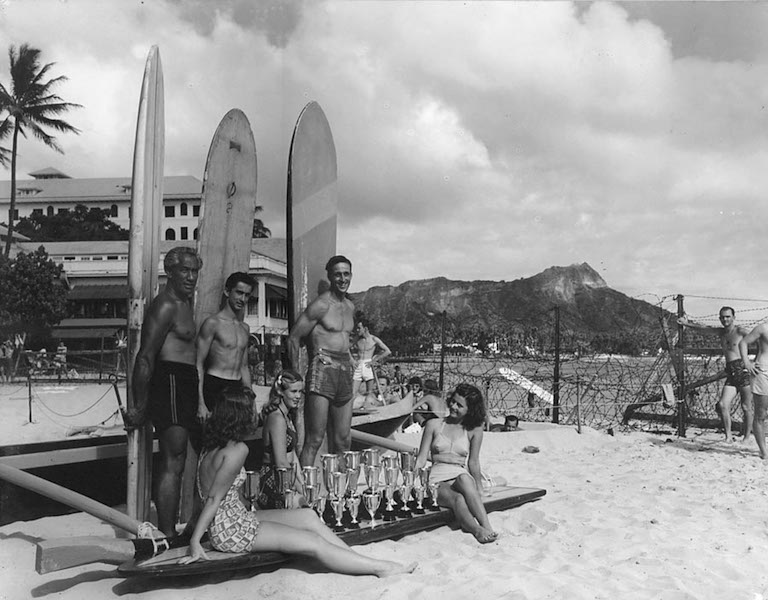Chris Cote and Kaipo Guerrero analyse Filipe's ten-pointer in Brazil…
A short while ago, the Brazilian Filipe Toledo scored a raft of perfect tens with what the commentator Chris Cote just described to me as “an upside-down, fifteen, sixteen feet across, four or five feet above the lip, fully inverted, 540 with a perfect landing. That was as snowboard as surfing gets.”
Cote, who is a guest commentator in Rio although his terrific performance there and at the Founders Cup suggests he will be joining the roster full-time, was enjoying a hamburger dinner in Rio with Kaipo Guerrero when asked to discuss the manoeuvre.
He coils it up like a cobra and you know he’s going to strike and you know it’s going to be crazy. You become speechless even as he winds up. You have no choice but to get excited. The electricity flows.”
“I was in the booth with Pottz and (Brazilian tour rookie) Jesse Mendes at the time. And it freaked everybody out. One thing about Filipe that’s incredible is the way he telegraphs his airs. He coils it up like a cobra and you know he’s going to strike and you know it’s going to be crazy. You become speechless even as he winds up. You have no choice but to get excited. The electricity flows.”
I suggest to Cote that the air could’ve been a career-ender given his brutal on-the-flats landing. Filipe could’ve buckled both legs.
“Oh yeah, but he doesn’t think like that. He doesn’t think he’s going to fall. The way that he landed in the flats it equates to a skater doing a trick down fifteen stairs. It’s about the same distance. There’s a famous skate spot called El Toro, twenty something stairs, and it became the benchmark of landing a skate trick. People are always breaking boards and their ankles. With Filipe, you gotta look at how high he was above the wave. You figure it’s a four or six-foot wave, he was four or six feet above that wave, that’s at least twelve feet he’s coming from to the flats. That in itself is crazy. He’s almost upside down and he lands it. It’s like a snowboarder landing in the flats in a half pipe. And there was no bobble. It didn’t affect him. He had the perfect spring right when he landed.”
How was the reaction in the commentary booth?
“Jesse had to cough and he looked down right when it happened and he looked up and asked, ‘What just happened?’ He went silent too, but again, it’s Filipe so it’s not surprising to anybody when he does something like that. It’s shocking in the moment but it’s not surprising.”
“That wave will solve any discussion about the scale being set to the mid-range,” says Cote. “It was an easy ten across the board, there was maybe one nine-nine, but the perfect ten score came a second or two after he landed it.”
Nearby Cote, and also eating dinner, are the WSL judges.
“That wave will solve any discussion about the scale being set to the mid-range,” says Cote. “It was an easy ten across the board, there was maybe one nine-nine, but the perfect ten score came a second or two after he landed it.”
How does it compare to Filipe’s ten in the pool?
“Oh I mean, twice as high, twice as far and the wave was twice as big. Until they can make pools six feet there’s no comparison although those guys will figure it out.”
And compared to his backside huck against John John in France two years ago?
“Today’s air was more controlled and cleaner,” says Cote. “That was a silent sniper shot. This is the air of the year on tour.”
In the background, Kaipo hollers that Seth Moniz’s air at Waco is better. Does he say ‘mo bettah?’ I’m unsure.
I ask Kaipo to analyse. “It’s like comparing grass court over a clay court. It’s different. We don’t know how many attempts Seth needed to make his air. We do know how many Filipe made. One. There it is.”
And the ambience on the beach?
“Everyone jumped out of their seats in the competitor’s area. On the beach, men, women, children, grandpas, aunties, everyone jumped up.”
What’s most interesting about the air is Filipe had already won the heat. This was a little theatre for the crowd.
“You gotta put everything in context,” says Kaipo. “Whether it’s a get-a-score air or a victory-lap air. There’s a difference mentally between the get-a-score air and the victory-lap air. A victory lap allows you free your mind.”
Still, says Cote, “John John is the best in the air, hands down.”








